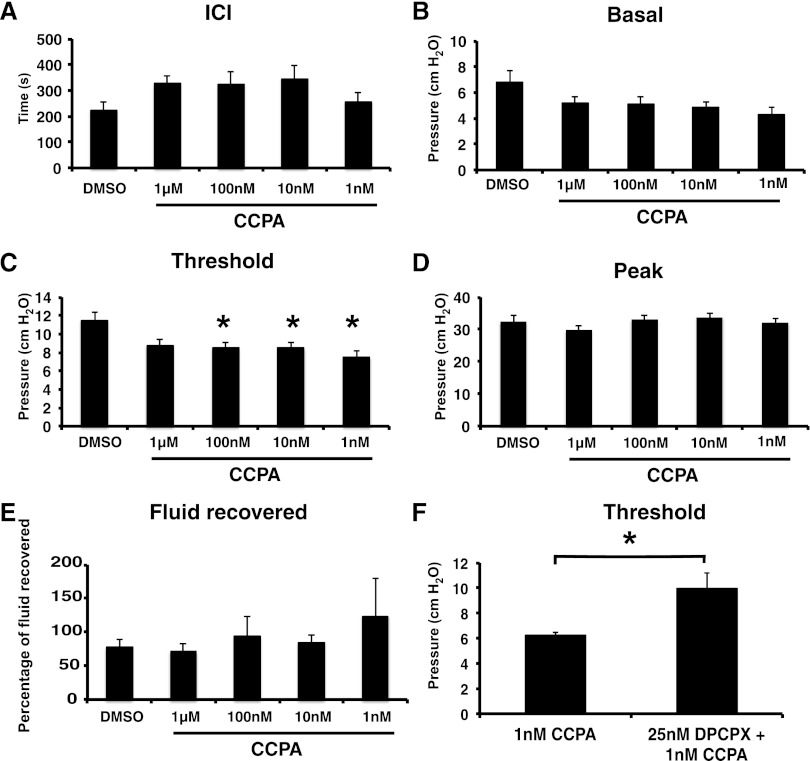Fig. 5.
Activation of apical A1 receptors with 2-chloro-N6-cyclopentyladenosine (CCPA) lowers the threshold pressure for voiding. Continuous cystometry was performed using the indicated concentration of drug dissolved in BUS. A–E: cystometry parameters were measured as described in Fig. 4. Data are expressed as means ± SE (DMSO control n = 10, 1 mM CCPA n = 7, 100 nM CCPA n = 13, 10 nM CCPA n = 12, 1 nM CCPA n = 9). *Statistically significant differences (P < 0.05) between DMSO-treated bladders and CCPA-treated ones. F: specificity of the effect of CCPA was tested by including 1,3-dipropyl-8-cyclopentylxanthine (DPCPX) in the cystometry buffer. Data are expressed means ± SE (CCPA n = 7, DPCPX + CCPA n = 8). DPCPX significantly antagonized the effects of CCPA alone.

